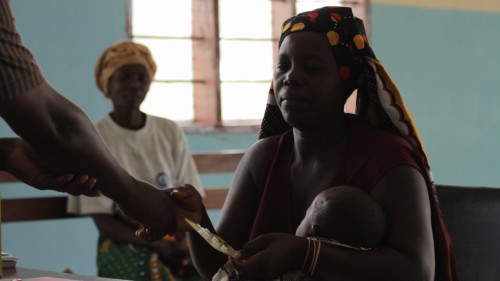
The Mayans predicted that civilization would end December 21, 2012. Now, in the year 2013, civilization remains, but it is far from stable. We are left to take stock of the many obstacles facing its continuation. Two global issues receiving immense amounts of public attention are healthcare and food shortages. These issues affect the entire world population, more than seven billion people, and are therefore the focus of a multitude of research projects. These projects range from small-scale local food surveys to large-scale global supply chain transformations. Some of the most cutting-edge research in an unbounded array of fields occurs at Yale, and the following stories are a few examples of Yale researchers’ efforts to combat two of the most pressing issues facing civilization.
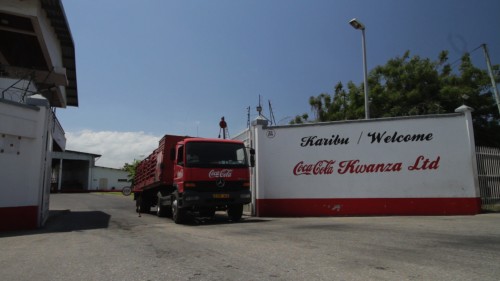
Project Last Mile
In developing countries, quality of life and life expectancy are significantly lower than in developed countries, largely due to lack of access to modern medicine and health care. At the World Economic Forum in 2009, an innovative attempt to combat this issue was born: Project Last Mile.
According to Erika Linnander, Director of Field Programs at the Yale Global Health Leadership Institute (GHLI), “everything came together at the right time.” The Cola-Cola Company was looking to contribute their expertise in supply chain management, and the Gates Foundation and the Global Fund were committed to supporting efforts to improve distribution of medicine to the developing world. The problem that still remained, as pointed out by Linnander, was that “a bottle of soda is different from an antiretroviral drug or a Band-Aid.” With the help of Accenture Development Partnerships, a management consulting firm, the project members began to translate the Cola-Cola Company’s expertise into something the Medical Stores Department (MSD) could implement.
The project was set to take place in Tanzania, where an audit of Global Fund grants had recently highlighted significant weaknesses in public supply chains for medical supplies and pharmaceuticals. In Phase I of the project, three main work streams were developed. Network optimization involved supporting the MSD as they increased the number of drop-points for medicine distribution from 500 to 5,000, creating unique distribution models for each Tanzanian community. The second work stream, central-level planning, involved forecasting necessary future stocks and tracking present supply by implementing supplier scorecards, regular stock tracking meetings, and upgraded software. Finally, talent management established organizational mentorship: a combination of the enrollment of MSD managers in Accenture’s proprietary online Supply Chain Academy and the connection of these managers with local Cola-Cola bottlers.
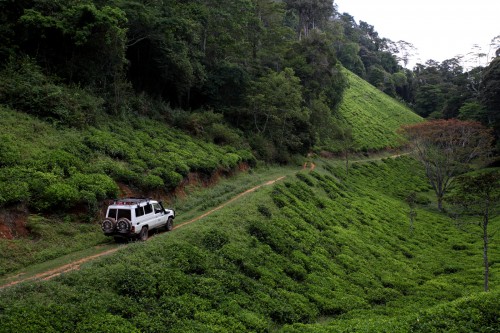
Based on the success of Project Last Mile, the team at the Yale GHLI is supporting the expansion of this program to additional countries. According to Kristina Talbert-Slagle, an associate research scientist at the GHLI, the focus of the present research is to “use interviewing techniques to understand how partnerships have come together and how expertise transfer has taken place.” In Project Last Mile, Joseph Mgaya, Director General of the MSD, played the role of the “boundary spanner,” with his exposure to both Tanzanian and American culture and cultural perspectives. Talbert-Slagle emphasized that the availability of such key figures who can bridge the cultural divide is essential to developing similar projects in other countries.
Presently, the team at the Yale GHLI is helping the project expand to Ghana and Mozambique. The GHLI has identified five factors that contributed to the success of the model developed in Tanzania: flexibility to adjust from global idea to local implementation, visible champions within each partner organization, country ownership, alignment and coordination among partners, and investment in implementation capacity. As stated in the case study for Project Last Mile, “the collaboration in Tanzania demonstrated that private business sector practices were directly applicable to solving the challenges faced by a public organization.” Clearly, developments such as Project Last Mile can have an enormous impact upon the challenges posed by the shortage of medicine and healthcare in the developing world ¬— further evidence that local projects, when scaled up, can overcome global obstacles to civilization.
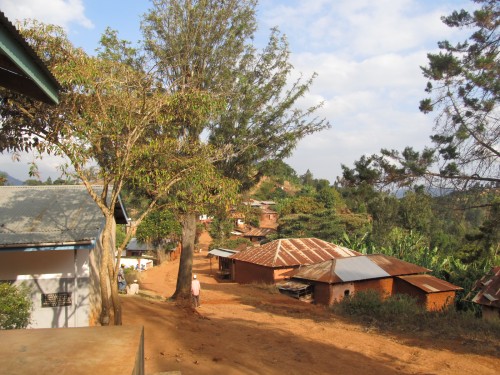
New Approaches to Food and Nutrition
A second key issue of global importance is that of food and nutrition. According to the World Health Organization, 870 million people were considered undernourished in 2012, with the highest percentages in Asia and Sub-Saharan Africa. As the challenges posed by world hunger span a multitude of areas, it is hard to identify the most significant challenge in the area of food and nutrition.
Mark Bomford, the director of the Yale Sustainable Food Project, weighed in with his opinion regarding the most pressing issues pertaining to food and nutrition. According to Bomford, the crux of the challenge is that we must find a way to move from counting calories to a more sophisticated measure of dietary quality. While the world currently produces enough calories to feed the entire global population, these calories are distributed unevenly, and forecasts for increased calorie requirements are closely tied to the increasing demand for calorie-dense meats in urbanizing areas. According to Charles Godfray, “recent studies suggest that the world will need 70 to 100 percent more food by 2050.” As Bomford explained, this is not strictly true, as “food” in these studies is often reduced to a combination of caloric energy and a forecast in growth of animal protein consumption. The focus of agriculture, therefore, has been on producing more calories, largely for animal feed. As a result, large amounts of land are cleared each year, in the process doing long-lasting damage to the environment. So the question becomes: how do we break the cycle of this need for more calories and the land clearing that accompanies it?
Bomford presented the idea that “if we can move beyond calories as the way we link food and health, we can also get beyond farm versus forest.” Three studies currently underway at Yale explore this diverse field. The first of these studies asked how people around the world can attain a healthy, diverse diet despite the expected calorie availability in 2050 (as determined by a correlation of the recommended 2,000-calorie diet with the projected world population of about nine billion in 2050). As Bomford pointed out, global public policies and interventions should focus not on cramming in as many calories as possible into the diets of the undernourished, but rather on addressing the dietary needs of affected populations. In other words, we need to focus on “getting the right food to the right people at the right time.” But how do we define the right food?
Urbanization represents another major barrier to the balance of food production and consumption. Karen Seto at the Yale School of Forestry and Environmental Studies is currently exploring the effects of urbanization on food-producing lands. These effects extend far beyond the simple clearing of land for infrastructure. The study has shown that migration to urbanized areas leads to an increase in population spending on food and therefore an increased demand for meat. To meet this increased demand, more forest is cleared for commercial agriculture, to the detriment of ecological health.
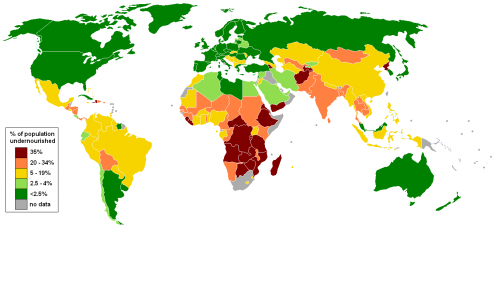
According to a 2012 article published in PLOS Medicine, “pesticide companies own the largest seed companies, and their agricultural model, dependent on purchased supplies of hybrid seeds and chemical inputs, favors larger, more capital-intensive farms.” This technological and agricultural expansion is in competition with land availability. The inevitable challenge then is no longer how we can expand current systems to produce more food, but how we can work within the limits of the current system to prevent further harm to our planet. This goes hand in hand with the question of how we define the right food. We do not necessarily need to produce more food, just as we do not need a greater quantity of calories. Perhaps all we need to do is find an alternative measure of nutrition and definition of food that allows us to more efficiently make use of present food resources and function within the current food production system.
Josh Evans, a recent Yale graduate, has taken an interesting approach to meeting this challenge through a study in Copenhagen in partnership with the Nordic Food Lab. This study, “New Approaches to Nordic Deliciousness,” is looking into “leveraging the talents of the best culinary folks in the world” toward making insects delicious and culturally appropriate. In the Disney movie “The Lion King,” Simba transitions from a carnivorous diet to one of insects, and at his first encounter with them, exclaims “Eww! Gross!”, to which his companion Timòn replies “Mmm. Tastes like chicken.” As far-fetched as this may seem at first, perhaps Disney had the right idea. Insects are a source of high-quality animal protein like the more familiar cattle, pigs, and chickens, but have a far lighter footprint and, unlike other traditional food sources, would not require such a high degree of ecosystem destruction for their production.
These three studies, when taken together, provide novel approaches to overcoming the limits to the survival of civilization presented by the global food supply. According to Bomford, they “may seem like small issues, but they are linked to issues of global importance once they’re scaled up.” The same scaling effect applies to the global health issues being confronted by initiatives such as Project Last Mile. In reality, dealing with issues as far-reaching as global nutrition and global health care takes collaboration. It is only through the intersection of a wide array of research avenues and organizational projects that we can hope to overcome the obstacles threatening our ability to outlive the earth.
About the Author:
Jessica Schmerler is a sophomore Molecular, Cellular, and Developmental Biology major in Jonathan Edwards College. She is the Production Manager for the Yale Scientific Magazine as well as the Editor-in-Chief of The Triple Helix and a contributing writer for the Yale Journal of Medicine and Law and the Yale Journal of Public Health.
Acknowledgements:
The author would like to thank Kristina Talbert-Slagle, Erika Linnander, Rosalind D’Eugenio, and Mark Bomford for their time and enthusiasm about research in these critical fields.
